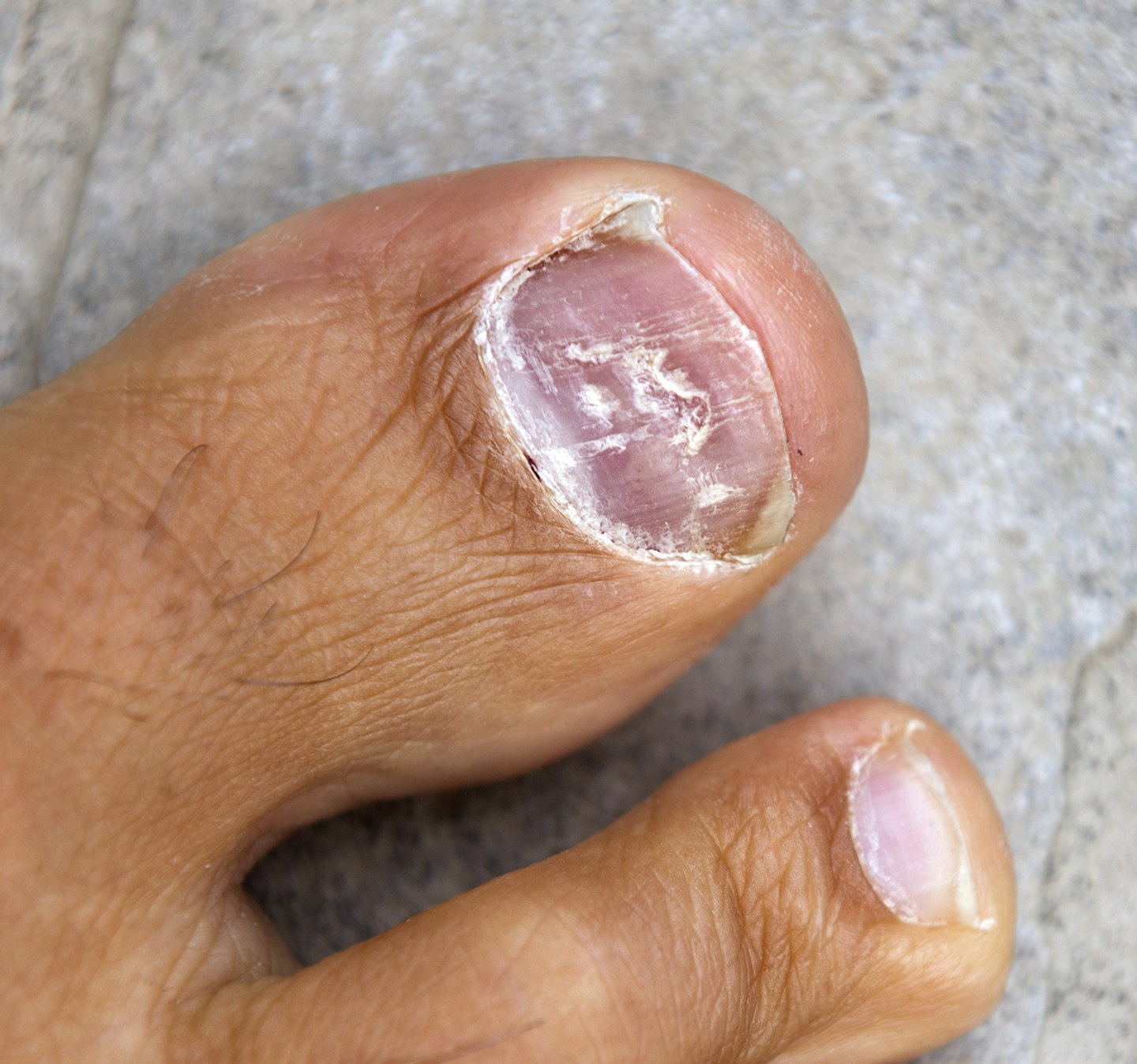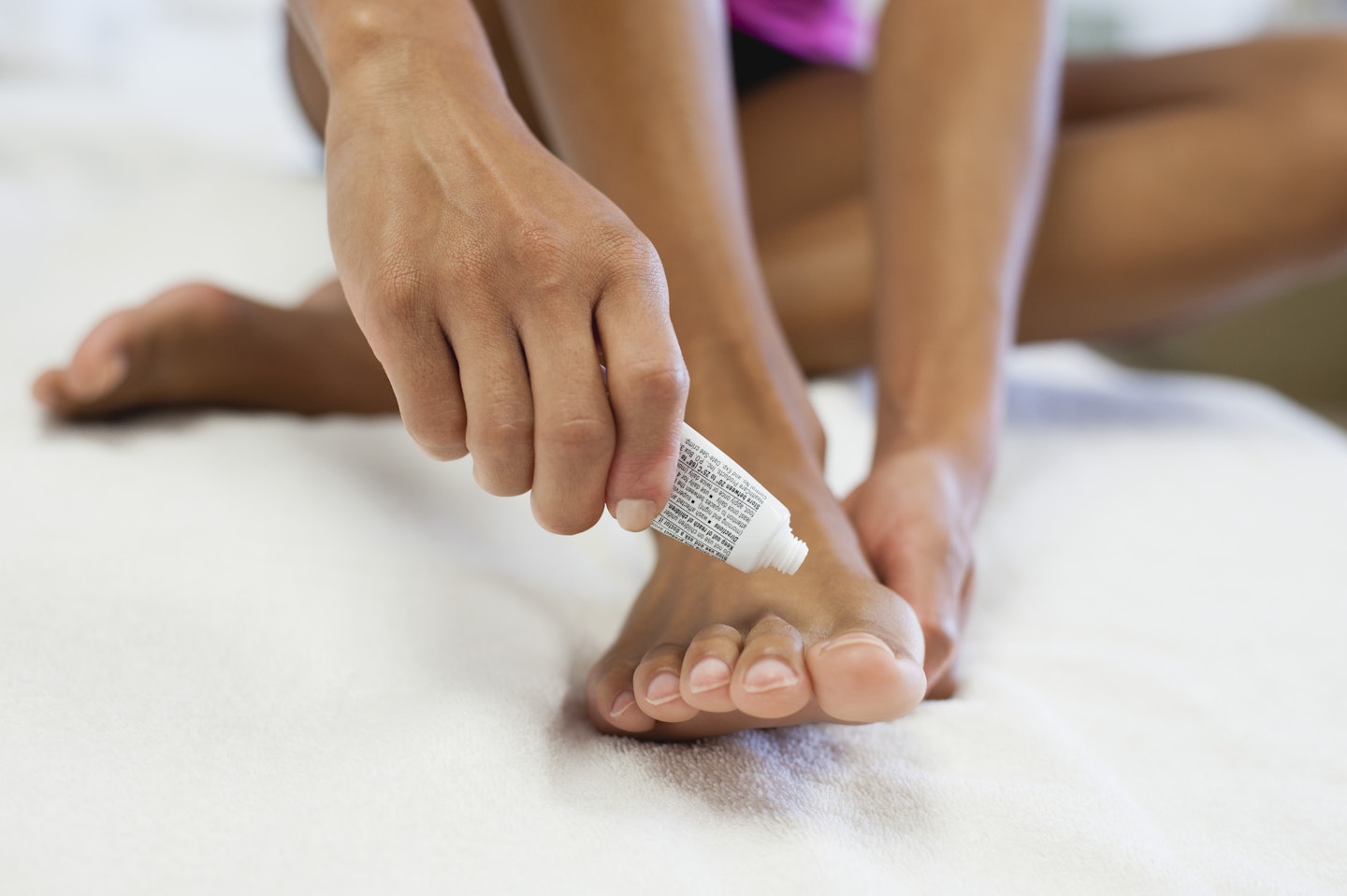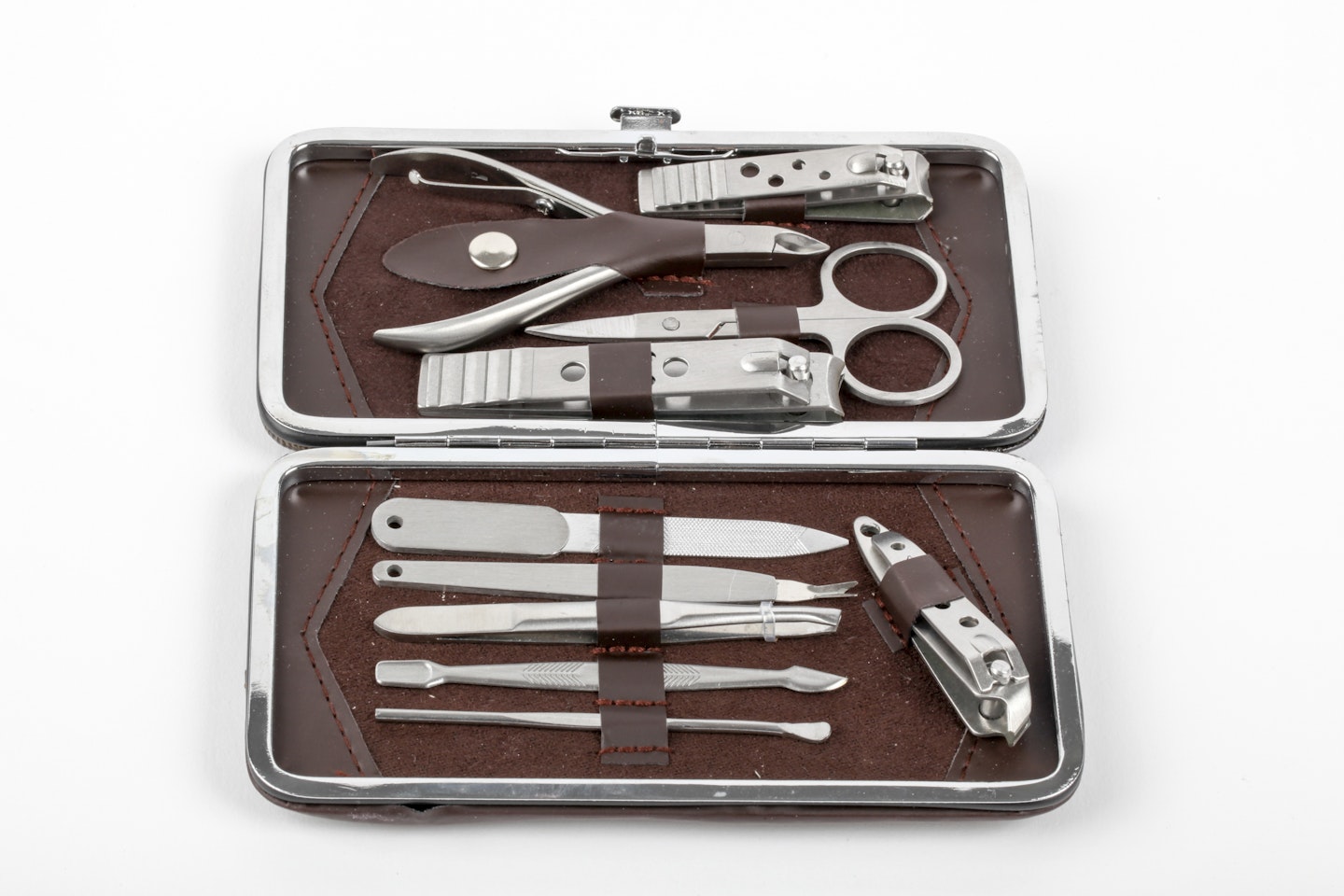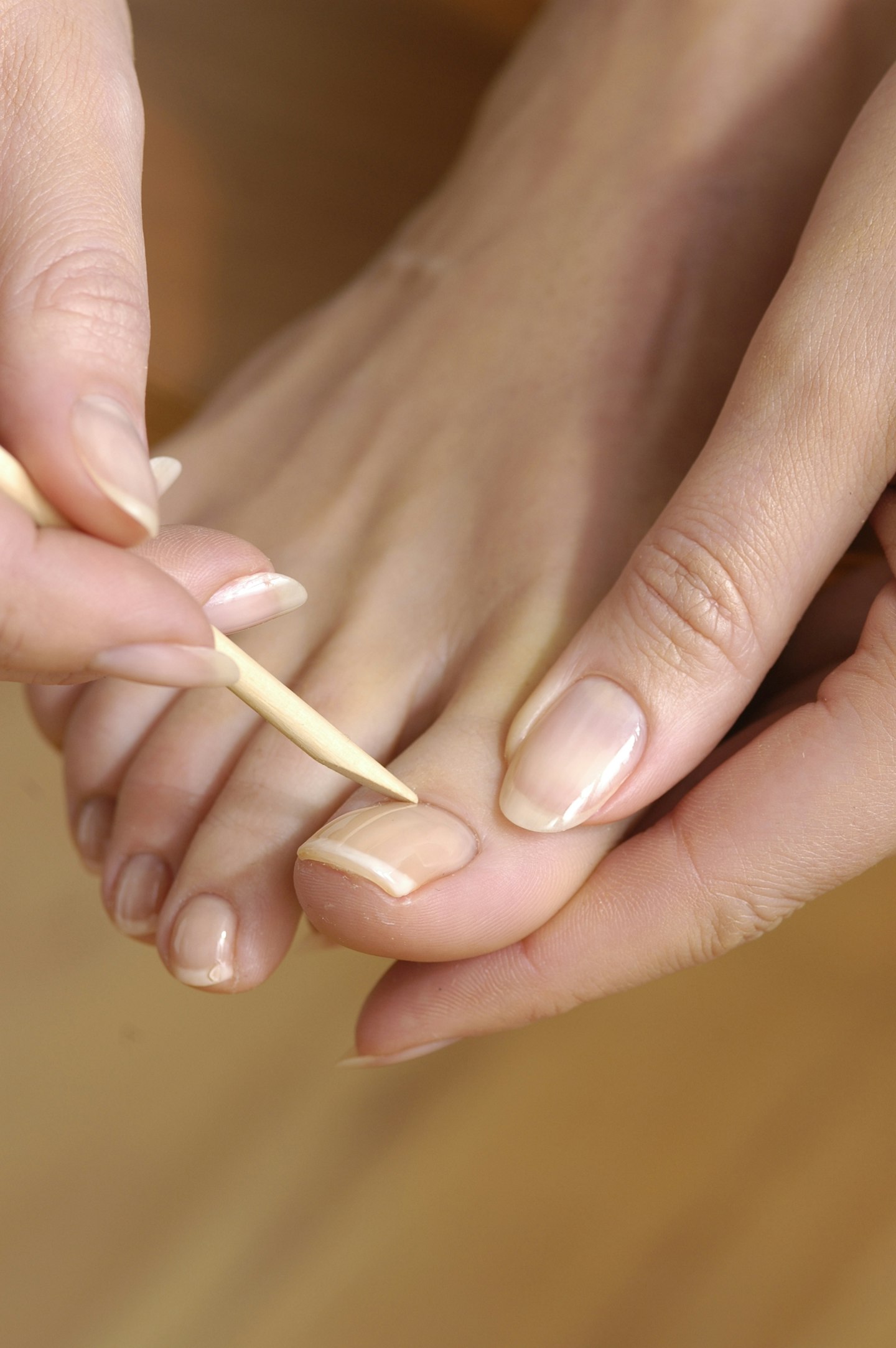Don’t worry if a nail infection has you hiding your toes away in ballet pumps this summer. Kate Moss and Madonna are just some of the celebs who have battled with yellow, brittle nails in the past.
Read about what causes this common infection and how best to treat it so you can proudly display some well groomed nails.

What is a fungal nail infection?
Fungal nail infections are quite common as fungi (known as dermatophytic onychomycosis or tinea unguium) can infect your nails when you’ve got a nearby cut.
They affect fingernails, toenails and the skin under your nail (the nail bed). Toenail infections are the most common and contagious as they spread in public showers.
What causes fungal nail infections?
The offending fungus is usually the same as athlete’s foot. An infection results from the fungus spreading to the keratin of the nail.
Candida is another culprit that can affect your skin and then nail – particularly if the nail is already damaged.
People with diabetes and psoriasis are at a higher risk of fungal infections. As are the elderly, those with impaired immune systems and smokers.
The Society of Chiropodists and Podiatrists has looked into other factors such as close contact with certain animals, sports such as marathon running and genetics. But the exact links remain unclear.
What are the symptoms?


The first sign of a fungal infection (see picture above) is the nail turning white, yellow, green or even black. The infection generally starts at the tip and works its way down the side of the nail toward the cuticle.
Your nail may become very thick, difficult to trim and crumbly. Big toenails are the most common victims and can be painful to touch as time goes on.
The surrounding skin can develop an infection so it may be itchy, swollen or appear white and cracked, particularly between the toes.
If the infection is left untreated, it can develop into cellulitis (an infection of the deeper layers of the skin and underlying tissue) or a bone infection.
So it’s best to see your doctor for a piece of your nail to be analysed. Culture tests determine which fungus is causing the infection and the appropriate treatment.
How can fungal nail infections be treated?

Although fungal infections don’t clear up on their own, mild infections are often left untreated.
Topical solutions or tablets are used to treat more embarrassing or painful infections, especially on fingernails.
Antifungal nail paint is less effective than treatments taken by mouth, but they are useful if the infection is diagnosed early. The solution (amorolfine and tioconazole) is easily applied and very safe.
The downside is these lacquers can take up to year to work and may not clear the deeper parts of the infection.
Antifungal tablets such as terbinafine and itraconazole can be prescribed for a period of 6-18 months (toenail infections take longer to resolve).
Griseofulvin is one of few medicines licensed for use in children. It is best absorbed when taken with fatty foods such as milk.
Oral treatments may cause side effects such as headache, nausea, loss of taste, diarrhoea and skin allergies.
In most cases, the nail will return to normal, but some infections caused by yeast and mould can be persistent and require repetitive treatment.
As a last resort, troublesome infections can be treated with a high-energy laser that destroys the fungus (but it’s expensive and often only available privately).
What are the natural alternatives?

If you're not keen on medication, particularly for your child, these simple home remedies may clear up the infection:
-
Apple cider vinegar is mildly acidic and can help kill bacteria. Mix equal parts apple cider vinegar and water, then soak your nail in the solution for 30 minutes daily. You should notice an improvement after a few weeks.
-
Tea tree oil has antiseptic properties. Mix a few drops of tea tree oil in one teaspoon of olive oil or coconut oil. Apply to the infected nail with some cotton wool, leave for 10 minutes, then gently scrub off.
-
Vicks Vapor Rub contains thymol, eucalyptus oil and camphor -all of which are considered to have antifungal properties. The trick is applying the gel so it doesn't rub off, so try covering your whole nail while you watch TV for a while.
What can I do to prevent them?

The good news is that regular pampering of your fingernails and toenails can keep infections at bay. A great excuse to book in regular mani-pedis!
Self-care tips include:
-
Regular trimming to keep your nails short
-
Well-fitting shoes and cotton socks that allow the skin to breathe
-
Don’t use other people’s nail clippers or ones you’ve used on an infected nail
-
Avoid bare feet in public showers, pack your flip flops for the gym and pool
-
Dry your nails thoroughly after a swim or long shower
-
Use antifungal spray on your socks if you’re prone to athlete’s foot
-
Try not to snip your cuticles, ask your manicurist to use cuticle pusher instead
-
Don’t leave your polish on too long as yeast, mould and bacteria can develop under the nail
-
Replace old footwear, particularly sandals or trainers you’ve worn without socks

Want to know more?
The NHS and British Association of Dermatologists can help.
You might also like to read...
Dr Christian: How to avoid, treat and soothe bites and stings
